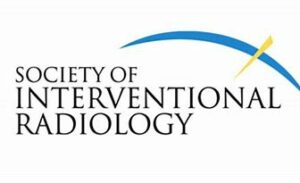INTERVENTIONAL RADIOLOGY SOCIETIES CALL FOR EXPANDED STROKE TRAINING

The Society of Interventional Radiology (SIR), the Cardiovascular and Interventional Radiology Society of Europe and the Interventional Radiology Society of Australasia have formed a Joint Commission committed to providing necessary stroke training to interventional radiologists in order to alleviate the shortage of physicians trained in endovascular stroke therapies.
The ability for patients to access thrombectomy-capable stroke centers remains stymied by geography and a shortage of interventional physicians, despite the American Heart Association’s and multiple international stroke organizations’ recommendations that endovascular thrombectomy (EVT or clot removal) be the standard of care for patients suffering acute ischemic stroke caused by blocked arteries.
A joint global position statement says in part:
“The shortage of physicians and comprehensive stroke centers providing EVT has been confirmed by the stroke neurology community, who recommend that patients be treated locally rather than having long transfer delays.
“Appropriately trained interventional radiologists can evaluate stroke patients and provide emergent EVT with good outcomes…especially where neurointerventional physicians are not available.
Further, the statement declares that interventional radiologists can also help provide 24/7 care in partnership with neurointerventional physicians where they are available.
Endovascular thrombectomy is proven to save lives and improve outcomes for patients suffering acute ischemic strokes. Patients who undergo these clot-removing treatments not only survive in greater numbers, but also have fewer resulting disabilities and are able to recover functions faster than best medical therapy.
“Reversing symptoms from these strokes requires rapid and safe removal of the occluding thrombus,” the societies’ statement continues. “Allowing interventional radiologists to join their neurology, neurointerventional, and neurosurgeon colleagues on care teams and allowing them to be part of certified stroke centers will greatly increase access to this critical treatment.”
SIR is already revising its current stroke training guidelines to support expanded patient access to interventional stroke treatment. The training pathway will reinforce Joint Commission and American Heart Association requirements for physicians operating in Thrombectomy-capable Stroke Centers and Comprehensive Stroke Centers (CSCs).
In September, the Joint Commission and the American Heart Association announced they would hold a dialogue with provider organizations to discuss requirements as the organizations work to update certification criteria for TCSs and CSCs.
SIR President M. Victoria Marx, MD, FSIR, an interventional radiologist at Keck School of Medicine of the University of Southern California, said SIR strongly believes IRs have a current and growing role in the care of patients with ischemic strokes.
“We stand committed to advocate for policy changes and provide the cognitive and technical skills and resources necessary for IRs to provide high-quality care,” Marx said. VTN

